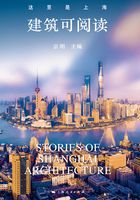
Former Shanghai General Post Office Building
Shanghai was the first city in China that pioneered modern postal service.
In 1872, the Inspector General of the Maritime Customs Bureau suggested setting up a “head post office” by referring to the British postal system and on the basis of the customs post offices, and to opening national postal service in places where conditions permitted.
On February 19,1896, the Qing government announced to set up the Head Post Office, which was subject to the Office of Foreign Affairs, and Sir Robert Hart, the then Inspector General of the Maritime Customs Bureau, was appointed to be the head of it. The next day, the post office in Shanghai Customs was reorganized as the Great Qing Imperial Post Office. 35 postal branches or postal offices were set up all over the country to establish China's postal network. After the founding of the Republic of China, the Great Qing Imperial Post Office was reorganized into the Chinese Post Office. The previous premises of the postal administration was no longer adequate, and in 1922, a land for the construction of a headquarter building was acquired at the north end of the Sichuan Road Bridge, where the water and land transportation were convenient with the North Railway Station and Huangpu River Wharf in the neighbourhood. It broke ground in December 1922, and was completed and put into use in December 1924.
The building was designed by the British company Stewardson & Spence. It is 51.6 meters high, covering a total area of 9.727 mu, and has a floor area of 25,294 square meters. The main facade was at the intersection of North Sichuan Road and North Suzhou River Road with two wings unfolded and roughly symmetrical. The main facade is topped by a Baroque style clock tower. Facing the main entrance, two marble treaded circular stairways on both sides lead to the 1200 square meters main trading hall on the second floor. Marble paves the floor, and on both sides stand marble counters, which feature exquisite copper railings. The hall is magnificent and gorgeous. Both wings use glass walls and three-story high Corinthian order columns.
The things worth particular mentioning are the bell tower and sculptures on the main facade. The bell tower is divided into three floors. The front and back are flat, and both sides are circular. On the corners are remarkably scrabrous quoins, while the reliefs on the eaves significantly increase the building's shadow and threedimensional effect, highlighting the clock face; the bell tower is 13 meters high, with a torch platform on both the east and west sides; on top of the bell tower is a 17-meter-high square-shaped clock tower with finely carved arc railings, a curved mouth and a tower top. There are door frames on four sides of the tower, and there is a pair of Ionic order columns on both sides of a door. There is an 8.2-meter-high flagpole on top of the tower. On each side of the tower base is a three statuary group. On one side, the sculptures respectively hold models of locomotive, ship anchor and communication cable. The other group features Hermes, the God of Commerce of ancient Greek, standing with a purse in hand; Hermes is flanked by Eros and Aphrodite, the god and goddess of love. This group of sculptures is an indication that postal service is like a messenger, transmitting information, communicating people's feelings.
The building is now used by Shanghai Postal Museum and other enterprises.